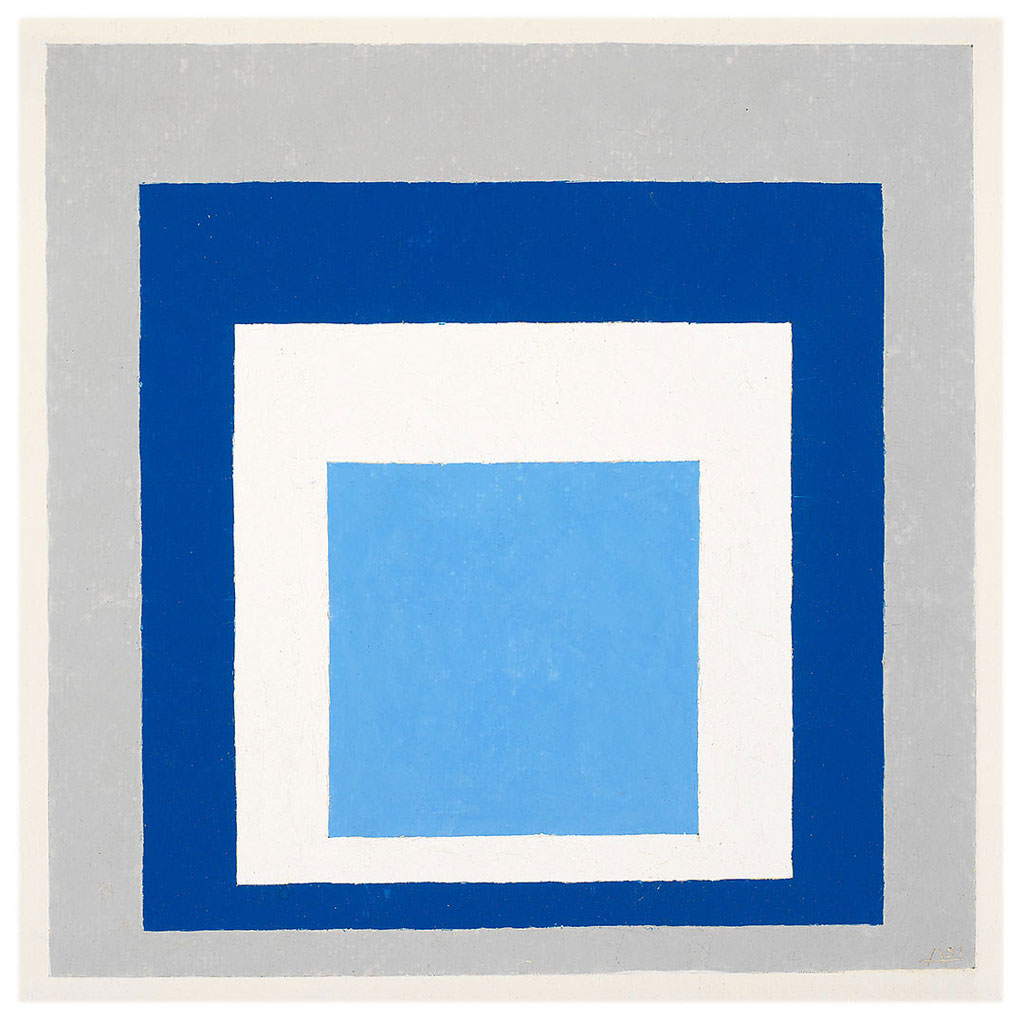ART-PRESENTATION: Albers and Morandi-Never Finished
 Both Josef Albers and Giorgio Morandi are best known for their decades-long elaborations of singular motifs: from 1950 until his death in 1976, Albers employed his nested square format to experiment with endless chromatic combinations and perceptual effects, while Morandi, in his intimate still lifes and occasional landscapes, engaged viewers’ perceptual understanding and memory of everyday objects and spaces.
Both Josef Albers and Giorgio Morandi are best known for their decades-long elaborations of singular motifs: from 1950 until his death in 1976, Albers employed his nested square format to experiment with endless chromatic combinations and perceptual effects, while Morandi, in his intimate still lifes and occasional landscapes, engaged viewers’ perceptual understanding and memory of everyday objects and spaces.
By Efi Michalarou
Photo: David Zwirner Gallery Archive
The exhibition “Albers and Morandi: Never Finished” puts each artist’s distinctive treatment of color, shape, form, morphology, and seriality in dialogue. Looking specifically at the palettes of Morandi’s celebrated tabletop still lifes depicting humble vessels and vases and Albers’s seminal “Homage to the Square” series, the exhibition elucidates how the two artists’ careful daily acts of duration and devotion allowed each to highlight the essence of color and the endless possibilities of their respective visual motifs. This shared aesthetic intensity links both artists and underscores their deep commitment to their forms. Though both Albers and Morandi created formally unique approaches to painting, their individual explorations of color reveal visual connections that redound throughout the exhibition. Both artists had a novel understanding of how the quantity and interaction of color within a structured serial format could result in distinctive, visually vibrant compositions. The color comes to be a shared, transcendent language through which the artworks communicate with each other. A small midnight-blue vessel isolated against an offwhite grayish ground in Morandi’s “Natura morta” (1959) seems to reiterate the status of the outermost square of cerulean blue in an Albers Homage from 1961. A rich vermillion, enclosed within a square of Naples yellow, in a 1954 , echoes the sienna red of a vessel in a rare, early “Fiori” (1915) by Morandi. The status of form, how Albers’s squares can project and recede based on their relation to one another, recalls how the experience of Morandi’s vases and pitchers are contingent upon the color, shape, and size of all the other items depicted in the composition. The pairings in the show bring out surprising and unexpected qualities in each artist’s work. Through their dialogue with Morandi’s still lifes, Albers’s linear, structured compositions reveal a painterly sensuousness and tactility that was always latent within them. The underlying conviction and determinacy of Morandi’s painterly act is never more evident than when his flowers and vessels rest adjacent to an Homage. The refinement of Morandi’s practice is further explored in the exhibition through the inclusion of a selection of the artist’s prints.
Josef Albers was born in Bottrop, Germany, in 1888 and studied briefly at the Königliche Bayerische Akademie der Bildenden Kunst, Munich, in 1919 before becoming a student at the Weimar Bauhaus in 1920. In 1922, Albers joined the school’s faculty, first working in stained glass and, starting in 1923, teaching design. In 1933, he and Anni Albers emigrated to North Carolina, where they founded the art department at Black Mountain College. The Alberses remained at Black Mountain until 1949 and in 1950 moved to New Haven, Connecticut, where Josef Albers was invited to direct a newly formed department of design at Yale University School of Art. In 1950, too, he developed what would become his seminal series, which he continued to elaborate until his death in 1976.
Giorgio Morandi was born in 1890 in Bologna, Italy, where he lived until his death in 1964. From 1907 to 1913, he was enrolled at the Bologna Accademia di Belle Arti, where he later served as the professor of engraving and etching from 1930 until 1956. By 1920, Morandi established the small-scale depictions of still lifes and landscapes that he would pursue throughout his oeuvre, and that were associated with no other school or style but his own.
Photo: Josef Albers, Homage to the Square: Guarded, 1952, Oil on Masonite, 61 x 61 cm, Courtesy David Zwirner Gallery
Info: David Zwirner Gallery, 537 West 20th Street, New York, Duration: 7/1-3/4/2021, Days & Hours: Tue-Sat 10:00-18:00 (Appointments are encouraged but not required), www.davidzwirner.com





